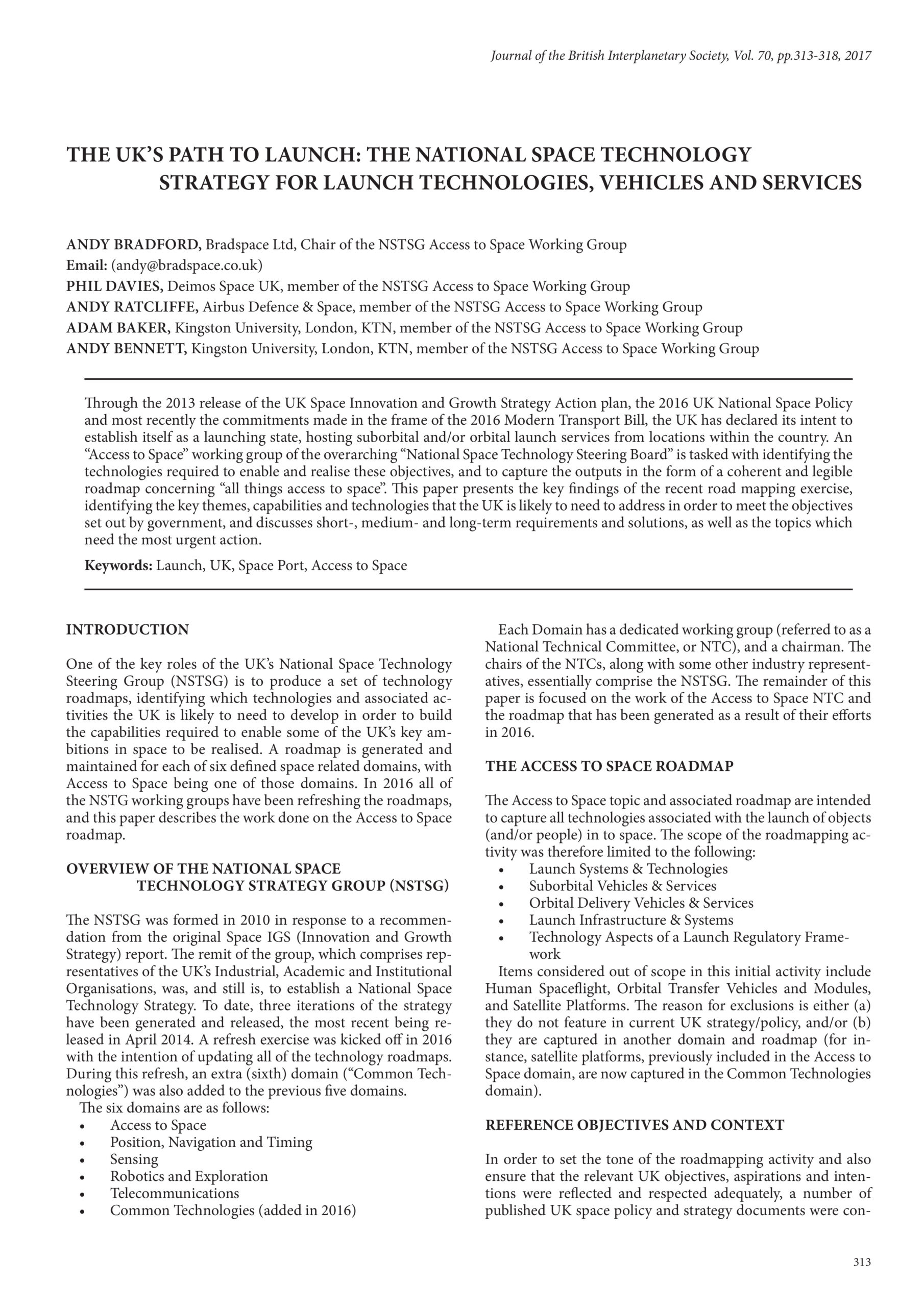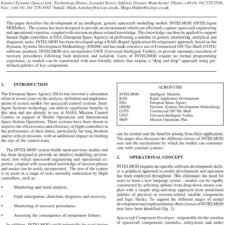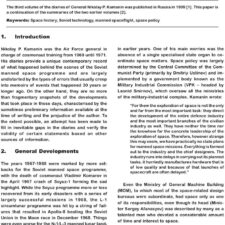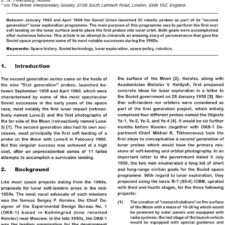The UK’s Path To Launch: The National Space Technology Strategy For Launch Technologies, Vehicles And Services
£5.00
A. Bradford et al. (2017), JBIS, 70, pp.313-318
Refcode: 2017.70.313
Abstract:
Spacecraft in interplanetary space and the radiation belts are vulnerable to `cosmic rays’. Solar storms produce large numbers of energetic ions and electrons that can penetrate and disrupt solar panels, electronics and human tissue. For decades, ideas have been considered as to how to use electromagnetic fields to deflect hazardous energetic charged particles from the vicinity of the spacecraft, so as to prevent them from ever impacting. The conclusion has always been that too much power is needed to implement active shielding with current technology. Until recently nobody has re-examined how the particles interact with the magnetic or electric field. The interaction is assumed to be via straightforward vacuum single particle dynamics, in which electric fields slow down/speed up charged particles and magnetic fields bend their trajectories around field lines. However, laboratory experiments and analyses of objects in space have shown that things are not that simple. Here we re-examine the principles using computer simulations, laboratory experiments and analysis of natural mini-magnetospheres on the Moon, which are now recognized as shielding the lunar surface from the weathering effect of eons of solar wind proton bombardment.





